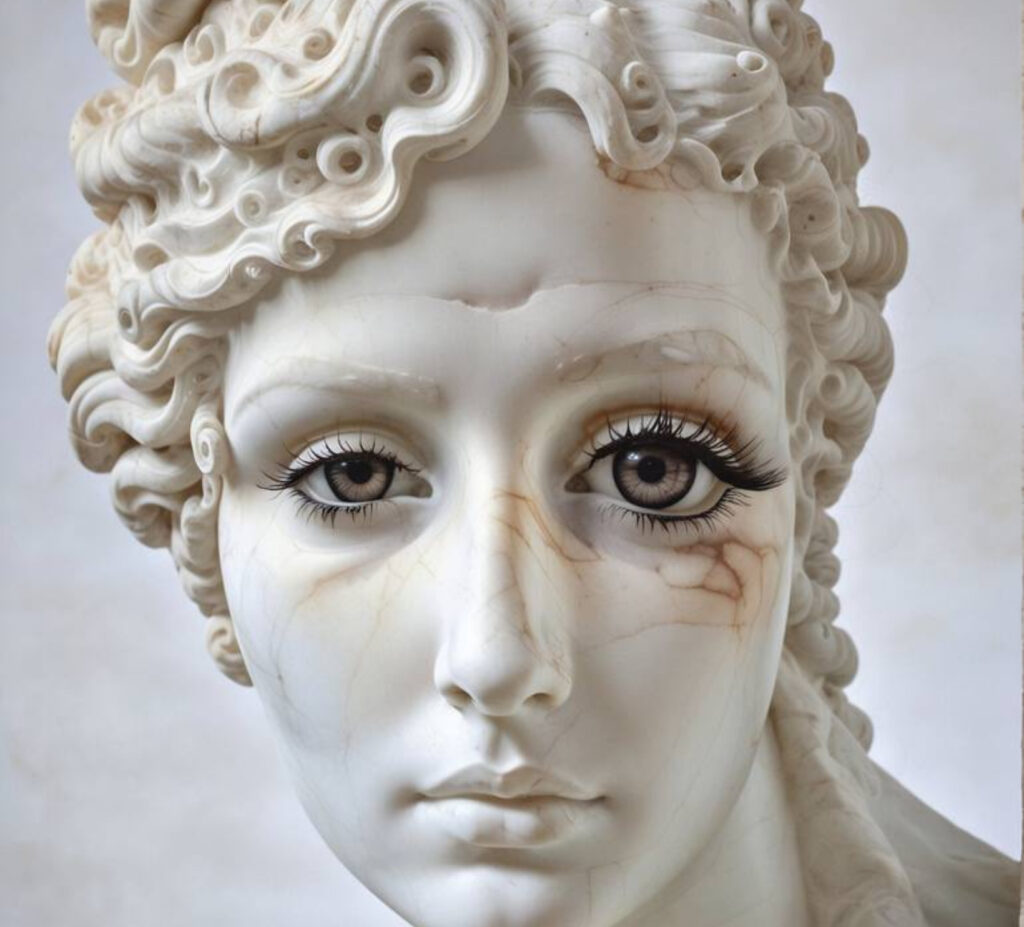Art has long served as a reflection of human emotion, time, and transformation, and Brazilian sculptor Sephora Venites has captured these elements masterfully in her latest work, “Fading Grace.” A deeply evocative piece, this sculptural artwork explores the themes of impermanence, memory, and the delicate balance between beauty and decay.
Unveiled at the São Paulo Biennial, Fading Grace has quickly gained recognition in the art world for its thought-provoking composition, unique materiality, and philosophical undertones. By blending traditional sculpting techniques with modern conceptual depth, Venites challenges the viewer’s perception of beauty, time, and the fleeting nature of existence.
The Artist: Sephora Venites and Her Vision
Before analyzing the sculpture itself, it is essential to understand the artist behind it. Sephora Venites is a renowned contemporary sculptor from Brazil, known for her ability to merge classical sculpting techniques with contemporary themes. Her work often explores themes of ephemerality, the passage of time, and the tension between materiality and impermanence.
Key Aspects of Venites’ Artistic Philosophy:
• Time as a Medium – She treats time not as an abstract concept but as a tangible force that influences her work.
• Beauty in Decay – Many of her sculptures intentionally incorporate elements of erosion, fragmentation, and slow deterioration.
• Emotional Storytelling Through Form – Venites prioritizes the emotional and sensory experience of the viewer over pure aesthetics.
With Fading Grace, she takes these concepts to their most refined and expressive form, challenging both traditional sculptural methods and contemporary art sensibilities.
Understanding “Fading Grace”
At first glance, Fading Grace is an arresting sight—a sculpture that appears to be in mid-transformation, balancing between solidity and dissolution. The piece is intentionally left unfinished in certain areas, giving it an ethereal, almost spectral quality.
Physical Description of the Sculpture:
• Medium: A blend of marble, oxidized bronze, and organic elements that gradually alter over time.
• Dimensions: Life-sized, depicting a human form caught between completion and disintegration.
• Visual Elements: Delicate, flowing fabric carved into stone, juxtaposed with sections that appear eroded or melting away.
• Color Palette: Natural tones—warm, earthy hues with streaks of oxidized metal, mimicking the aging process.
Venites’ craftsmanship blurs the line between permanence and transience, as portions of the figure seem to dissolve into thin air. The use of different materials that respond to environmental conditions ensures that the sculpture itself will evolve over time, mirroring the theme of impermanence.
The Symbolism Behind the Artwork
The title Fading Grace suggests an exploration of the ephemeral nature of beauty, memory, and human existence. Rather than celebrating eternal perfection, Venites’ sculpture embraces imperfection and change, questioning the very notion of preservation in art.
The Passage of Time
The artwork represents the inevitable shift between youth and aging, fullness and erosion. The figure’s face, partially worn away, symbolizes how identity and beauty evolve over a lifetime.
Impermanence and Fragility
In contrast to classical sculptures that aim for permanence, Fading Grace acknowledges that even art is subject to deterioration and reinvention. The dissolving portions of the sculpture remind viewers that nothing is fixed—not even stone.
The Duality of Strength and Vulnerability
The remaining solid parts of the figure exude strength and resilience, while the fading areas reflect delicacy and loss. This duality is a central theme in Venites’ work, echoing the human experience of transformation and acceptance.
Brazilian Cultural and Natural Influences
Venites incorporates Brazilian environmental motifs, with sections of the sculpture appearing as if being reclaimed by nature. The slow oxidation of the bronze adds a patina that mimics the natural weathering of ancient artifacts, symbolizing how history and culture erode and reform.
The Artistic Process and Techniques Used
Material Selection
Venites carefully selected materials that naturally change over time, ensuring that Fading Grace itself becomes a living, evolving piece. The combination of marble (a classical medium), oxidized bronze (symbolizing age), and organic matter (ephemerality) creates a sculpture that resists static interpretation.
Innovative Techniques:
• Hand-Carved Marble Sections: Classical precision carving used to depict the untouched areas of the figure.
• Chemical Treatment of Bronze: Encouraging oxidation to create organic, unpredictable textures.
• Intentional Erosion Techniques: Applying environmental factors such as wind exposure, heat, and moisture to accelerate the sculpture’s transformation.
Venites described her approach as “collaborating with time rather than resisting it,” allowing natural forces to play a role in shaping the final outcome.
5. The Reception and Impact of “Fading Grace”
Since its unveiling at the São Paulo Biennial, Fading Grace has been met with critical acclaim and deep audience engagement. Its impact extends beyond visual art, touching on philosophical discussions, cultural memory, and even sustainability in artistic creation.
Critical Response:
• Art critics have praised the sculpture’s ability to evoke emotion and introspection, calling it “one of the most poignant statements on impermanence in modern sculpture.”
• Historians and cultural theorists have compared its approach to wabi-sabi aesthetics, a Japanese philosophy that finds beauty in imperfection and impermanence.
• Visitors to the Biennial have described feeling a “profound emotional resonance” with the piece, as if witnessing a memory being preserved and erased simultaneously.
Impact on Contemporary Brazilian Sculpture:
• Brings global attention to Brazilian contemporary art beyond traditional forms.
• Encourages experimental approaches to sculpture that embrace time as an artistic element.
• Inspires dialogue about the intersection of art, nature, and cultural memory.
6. The Future of “Fading Grace”
Unlike traditional sculptures that remain unchanged over time, Fading Grace is designed to continue evolving. Venites has expressed that the piece will eventually be moved outdoors, where environmental conditions will accelerate its natural transformation.
Future Plans:
• Outdoor Installations: Potential relocation to a public space where natural forces will further shape the piece.
• Expanded Series: Venites has hinted at a collection of works exploring similar themes in different materials.
• International Exhibitions: Plans for Fading Grace to tour globally, bringing its message of impermanence to a wider audience.
By embracing change as part of the artistic process, Sephora Venites challenges traditional ideas of artistic preservation. Instead of resisting time, she welcomes it, allowing her work to remain in constant conversation with the world around it.
Impression
Fading Grace is more than a sculpture—it is a meditation on existence, beauty, and transformation. By blurring the line between creation and decay, strength and fragility, completion and dissolution, Sephora Venites has crafted a piece that will continue evolving, much like life itself.
As art lovers and cultural observers look upon this masterpiece, they are reminded that beauty is not in preserving perfection, but in embracing change, movement, and the fleeting grace of time.
No comments yet.








